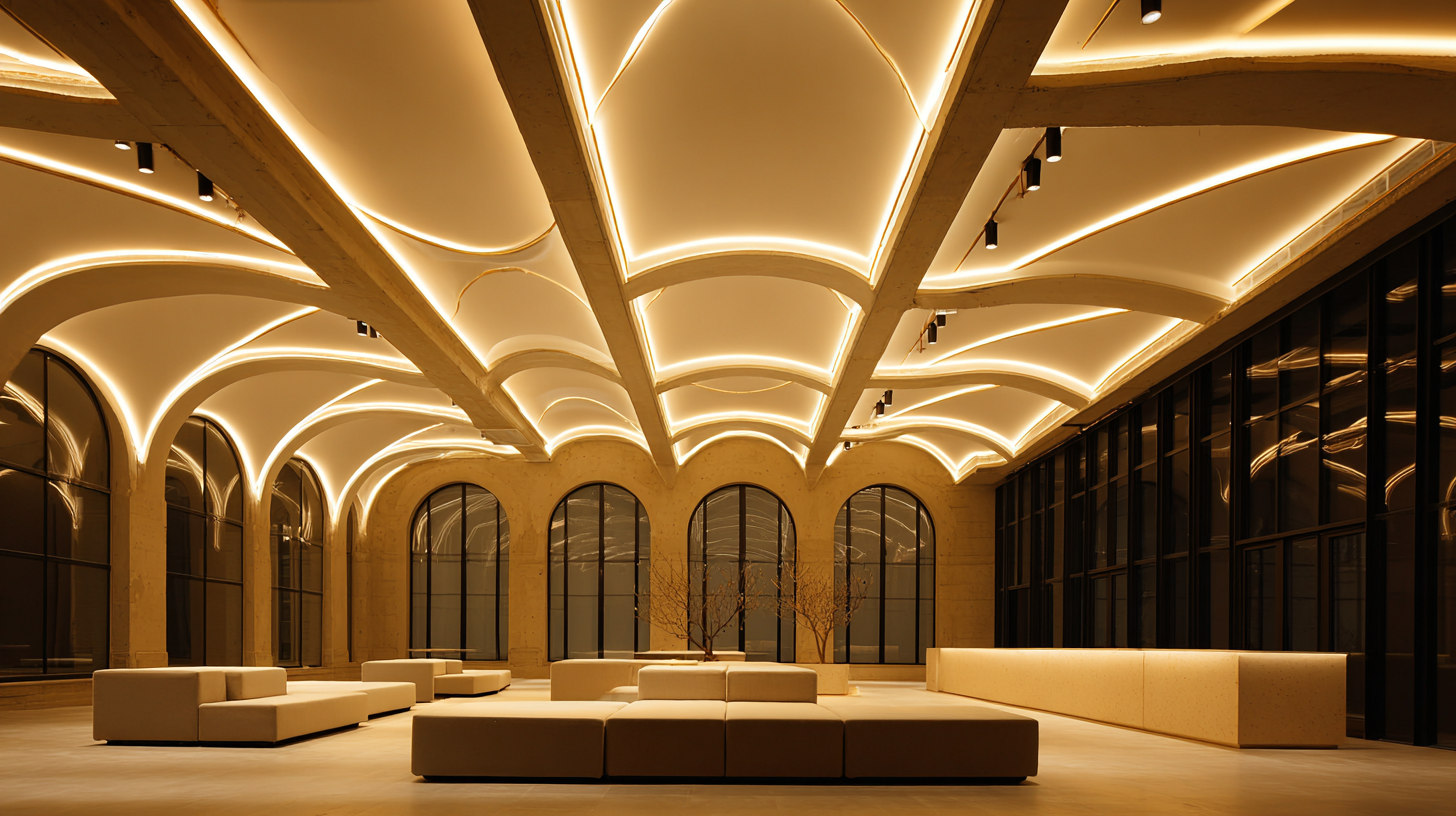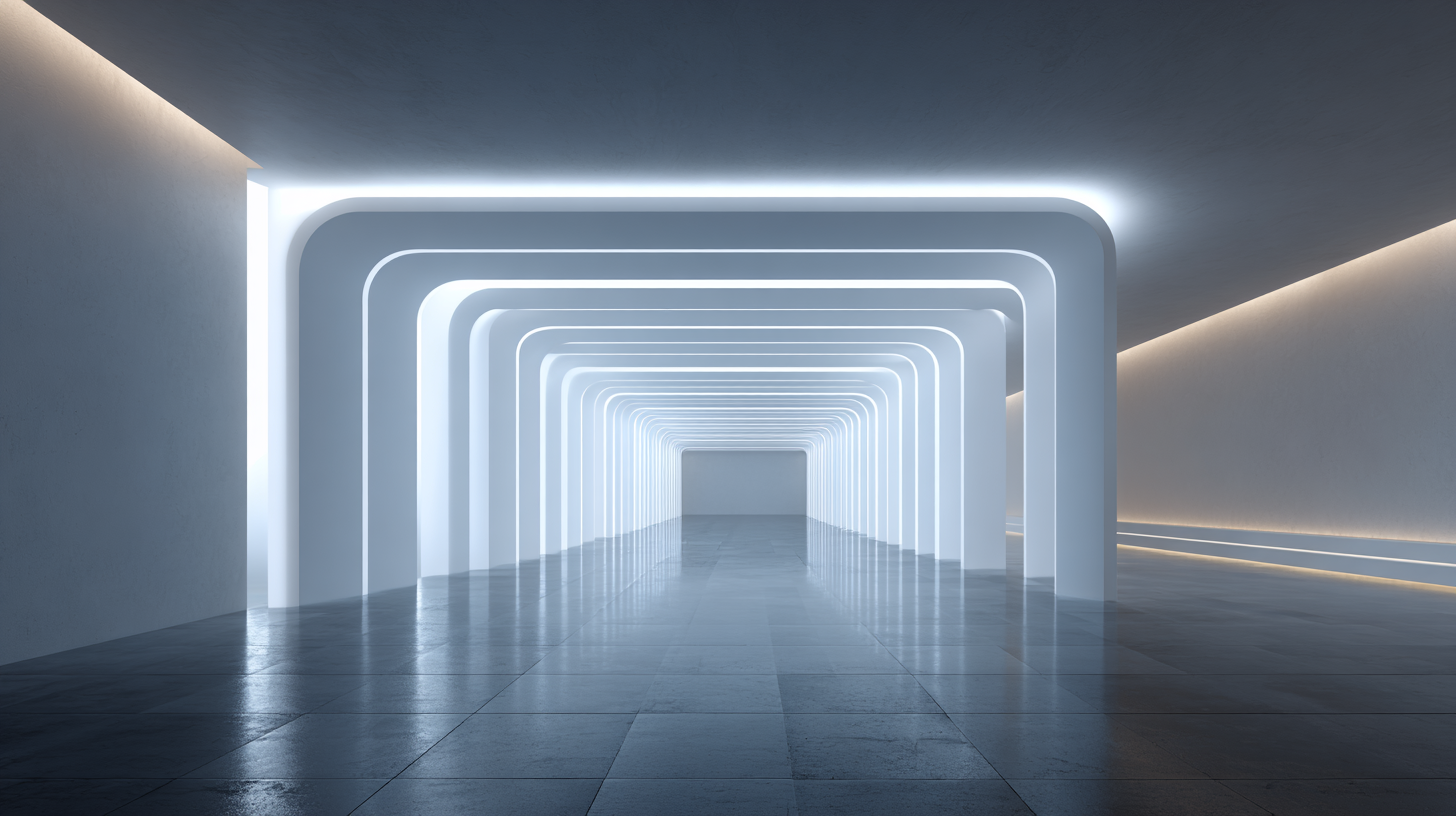 +86-750-3598205
+86-750-3598205


In recent years, the integration of LED profiles into architectural design has transformed the way we illuminate spaces, enhancing both aesthetic appeal and energy efficiency. According to the U.S. Department of Energy, LED lighting technologies have the potential to reduce energy consumption for lighting by nearly 75% compared to traditional incandescent bulbs. This dramatic shift not only leads to lower operational costs but also significantly minimizes the carbon footprint associated with lighting.

Furthermore, the versatility of LED profiles allows for innovative designs that can seamlessly blend into various architectural styles, creating dynamic environments that are both functional and visually stunning. As architects and designers increasingly turn to LED profiles, the combination of form and function is achieving new heights, paving the way for a sustainable future in design and architecture.
LED profiles have become a pivotal element in modern architectural design, merging aesthetics with energy efficiency. These profiles offer versatile lighting solutions that can be seamlessly integrated into various structures, enhancing both interior and exterior spaces. Understanding the basics of LED profiles entails recognizing their flexibility in design: they can be installed in ceilings, walls, and even furniture, providing ambient lighting or highlighting architectural features.
Tips for incorporating LED profiles effectively include considering the color temperature; warm white light creates a cozy atmosphere, while cool white enhances clarity and energy. Additionally, plan the placement of LED profiles to draw attention to focal points in a space, such as artwork or architectural details, thereby creating depth and contrast. Lastly, use dimmers or smart controls to adjust light levels according to the time of day or activity, maximizing energy efficiency while maintaining the desired ambiance.
By embracing LED profiles, architects can not only elevate their design capabilities but also promote sustainability. The energy-saving benefits of LED technology mean lower operating costs and reduced environmental impact, making it a wise choice for modern constructions focused on excellence in both form and function.
As the demand for sustainable building practices grows, LED lighting solutions have emerged as a cornerstone of energy efficiency in architectural design. Recent studies reveal that switching from traditional incandescent lighting to LED can reduce energy consumption by up to 80%. According to the U.S. Department of Energy, implementing LED lighting in commercial buildings can lead to a staggering savings of more than $30 billion annually in energy costs. This significant reduction not only lessens the burden on the environment but also enhances the overall profitability of commercial spaces.
Incorporating LED profiles into architectural designs offers more than just energy savings; they also provide versatile aesthetics that can transform spaces. LED lighting allows for innovative design elements, such as accent lighting and dynamic color schemes, which enhance both functionality and visual appeal. Architects and designers who leverage these technologies make environments not only more efficient but also more engaging for occupants.
Tip: When designing spaces with LED lighting, consider using dimmable options to maximize energy savings during off-peak hours.
Tip: Layer your lighting with LEDs of varying intensities and colors to create a more immersive atmosphere while maintaining energy efficiency.
Employing these techniques can lead to remarkable energy conservation and a striking design, further solidifying the case for LED technology in modern architecture.
The integration of LED profiles in architectural design is a game-changer, enhancing both aesthetics and energy efficiency. More architects are embracing LED technology not only for its visual appeal but also for its sustainable advantages. According to recent studies, LED lighting can reduce energy consumption by up to 75% compared to traditional incandescent bulbs, which resonates with the increasing demand for eco-friendly building practices in modern architecture. This capability allows designers to create innovative lighting solutions that elevate the ambiance of spaces without compromising energy efficiency.
Additionally, the versatility of LED profiles facilitates creative applications in various architectural contexts. From transparent LED displays for digital signage to ambient lighting that highlights structural features, the possibilities are vast. For instance, recent showcases have demonstrated how advanced LED technology can transform public spaces, making them more engaging and visually dynamic, thereby contributing to a more interactive urban environment. As architects continue to meld form and function, the deployment of LED profiles stands out as a pivotal element in modern design strategy, ultimately shaping a more sustainable and aesthetically pleasing built environment.
Integrating LED technology into existing building designs is a transformative approach that not only enhances aesthetic appeal but also significantly improves energy efficiency. By replacing traditional lighting with LED fixtures, architects and builders can achieve dramatic effects with lower energy consumption. Whether it’s retrofitting outdated lighting systems or incorporating LED strips and panels into architectural features, the flexibility of LED technology allows for seamless integration into various design styles.
 Tips: When considering LED integration, focus on the lumens per watt ratio to maximize brightness while minimizing energy use. Also, explore the use of smart lighting controls that adapt to occupancy and natural light conditions, further enhancing energy savings.
Tips: When considering LED integration, focus on the lumens per watt ratio to maximize brightness while minimizing energy use. Also, explore the use of smart lighting controls that adapt to occupancy and natural light conditions, further enhancing energy savings.
Moreover, the versatility of LED profiles enables creative solutions for existing spaces. Designers can use linear LED fixtures to accentuate architectural lines or highlight unique building elements. Incorporating ambient lighting with LED technology can transform ordinary spaces into inviting environments, improving the overall experience for occupants.
Tips: Opt for dimmable LED lights to adjust brightness levels based on different times of the day or events, improving both ambiance and energy efficiency.
The shift towards sustainable architecture is being significantly influenced by advancements in LED lighting technology. Recent studies indicate that LED lighting can reduce energy consumption by up to 75% compared to traditional incandescent bulbs. According to a report from the U.S. Department of Energy, the widespread adoption of LEDs could save the nation approximately $30 billion in electricity costs annually by 2027. These statistics highlight the critical role that LED profiles play in enhancing both energy efficiency and architectural design.
As the demand for eco-friendly solutions grows, future trends in LED lighting are expected to focus on smart technology integration and human-centric designs. Innovations such as tunable white LEDs, which can adjust their color temperature throughout the day to mimic natural light, are already on the rise. Furthermore, the global LED market is projected to reach $105.4 billion by 2025, fueled by increased investments in smart cities and green building projects. This indicates a substantial growth opportunity for architects and designers to incorporate LED solutions that not only meet aesthetic needs but also contribute to environmental sustainability.

